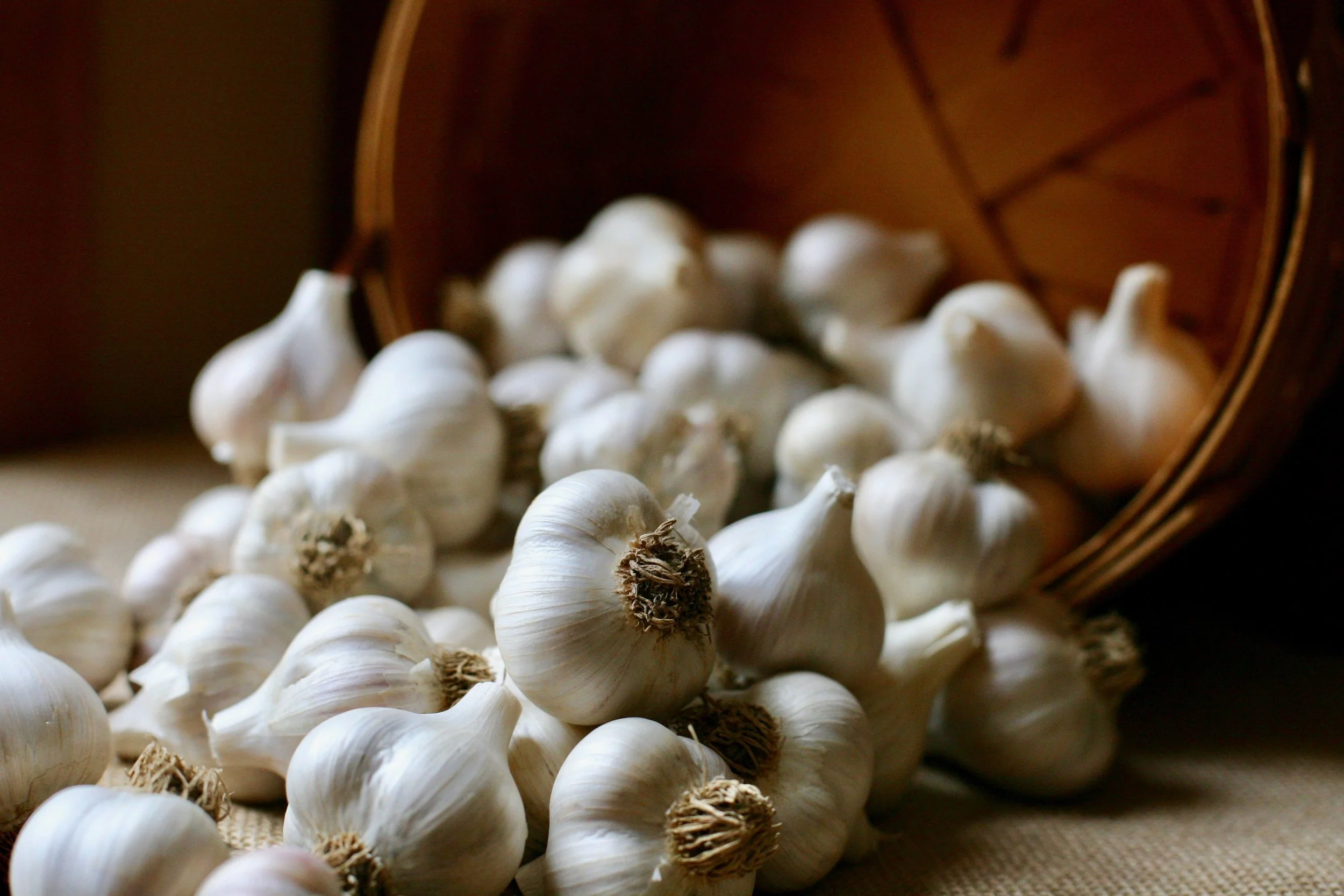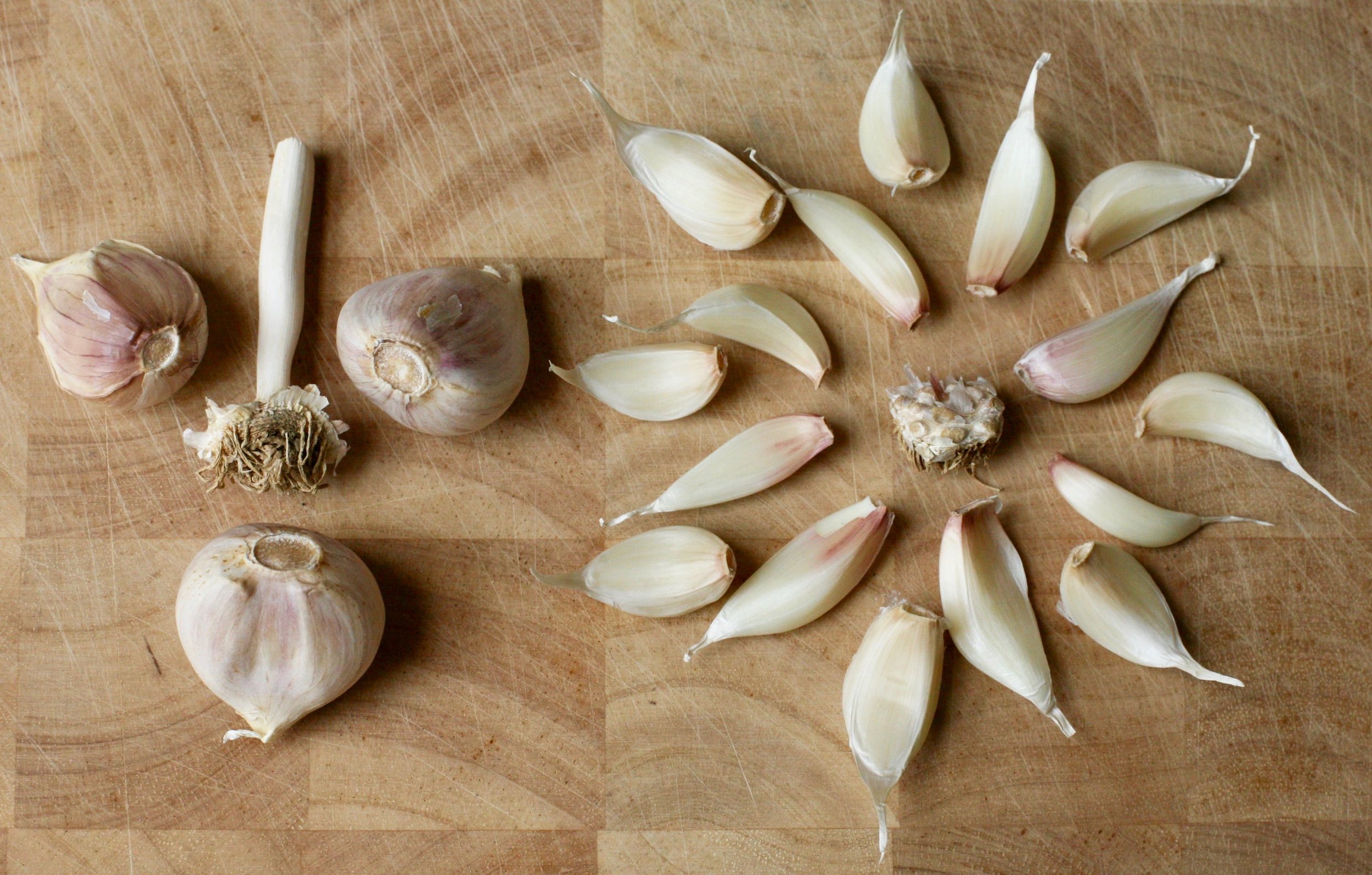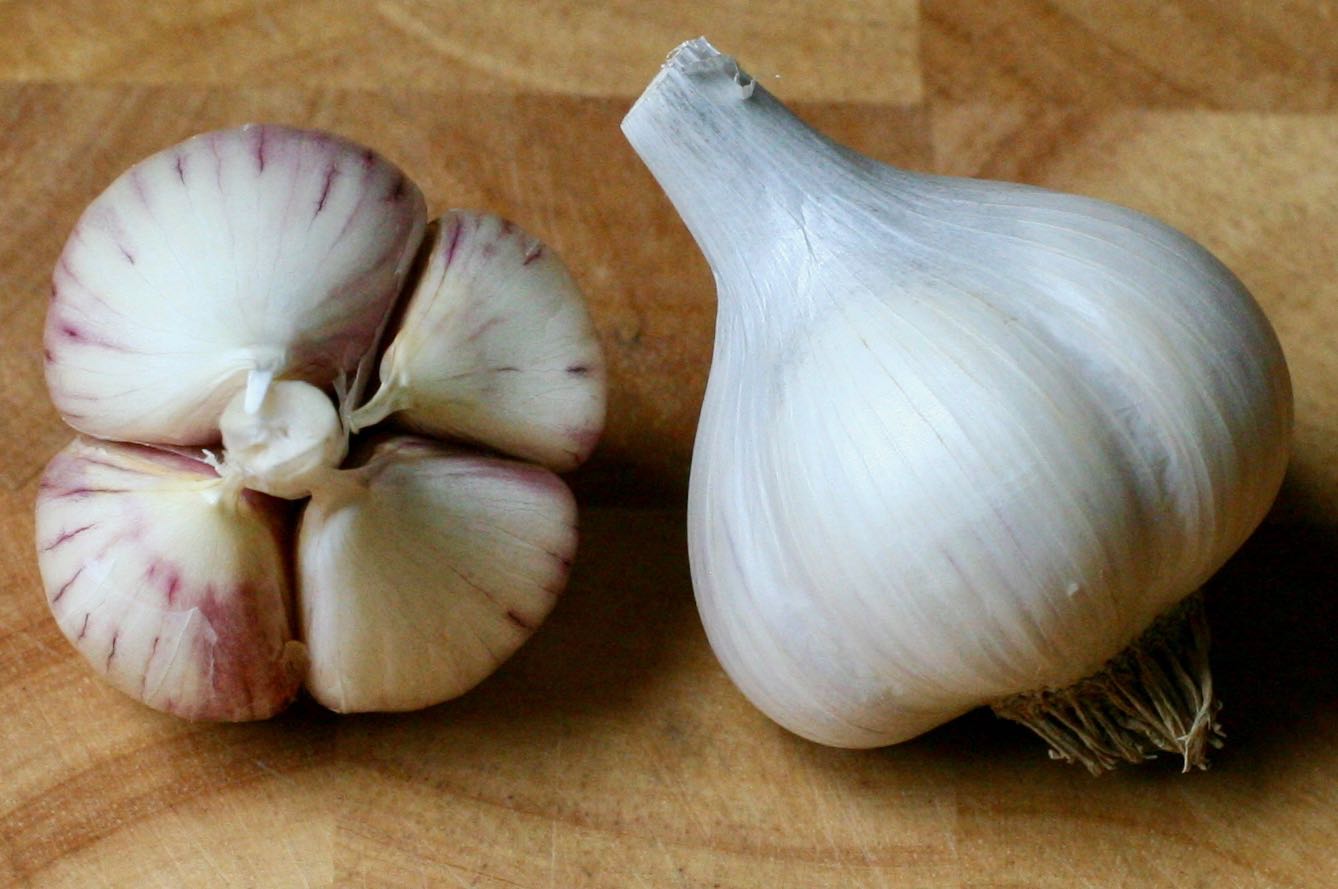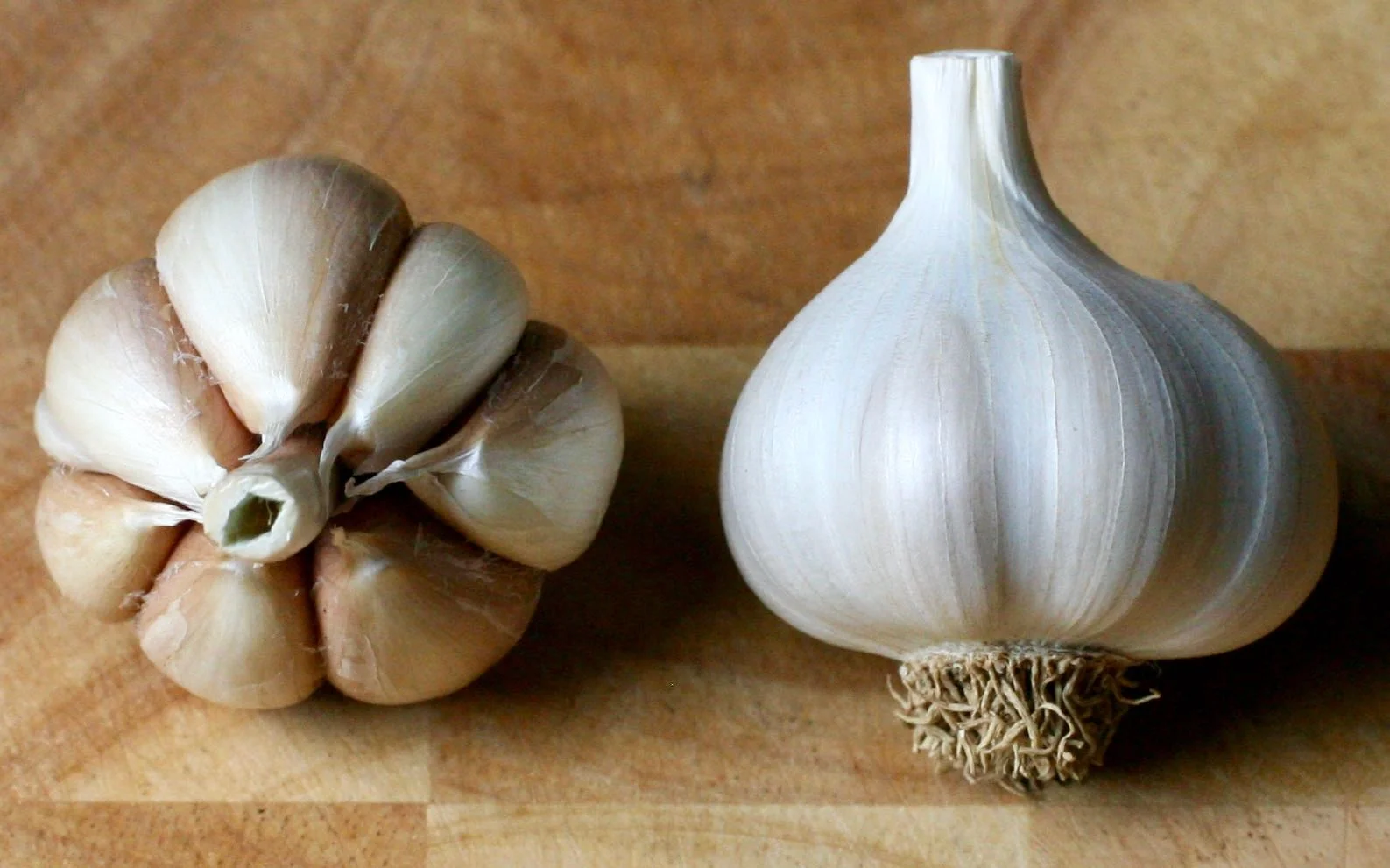It's Garlic Season - Finally!
It was a little late - like practically everything else this season - but our garlic has now been harvested, cured, cleaned, inspected and graded for the 2018 season. We had some challenges - heavy spring rains and brand new beds full of weeds to name a couple - but based on our overall yield, and my own unofficial taste testing, it was well worth our efforts.
If you've never tried it, there's really no garlic like fresh garlic. The cloves are rock hard when you squeeze them, but juicy when sliced or crushed. Eaten raw, fresh garlic flavor is intense with a heat ranging from a slow, mellow burn to an instant, tongue-on-fire inferno. Cooked garlic still retains plenty of its essential flavor but it's more mellow, with varying levels of sweetness.
Garlic is grown all over the world and there are hundreds, maybe thousands, of garlic varieties out there. Each has unique flavor and storage characteristics, so we thought it might be helpful to give a little snapshot of each variety that we're offering this year. But before we get there, let's zoom out and talk a little a bit about the two overall types of garlic: hard-necks and soft-necks.
Hard-neck garlics have a central stem (or neck) with a single layer of cloves arranged around it. Each bulb typically has 4-12 large to extra-large cloves, and the clove wrappers tend to peel more easily than soft-neck types. Easy-peeling wrappers actually lend to hard-necks main drawback: they only store about half as long as soft-neck types. On the other hand, hard-necks are generally considered to have superior flavor that is often more complex and nuanced than soft-necks. In addition to delicious bulbs, hard-neck garlics also produce a bonus crop of scapes about 6 weeks before the bulbs are ready to harvest. Scapes are the flowering stalk of the garlic plant. They have a small bulb (called a ‘bulbil’) at the tip and some varieties curl into elegant shapes. As garlic growers we remove the scapes so the plant can direct its energy to producing larger bulbs, rather than reproducing itself as it would in nature. Scapes are quite tasty and versatile in their own right.
The hard-neck garlic on the left has a central stem, or neck, and a single layer of large cloves. The soft-neck garlic on the right has no central stem, but instead has multiple layers of cloves arranged somewhat like artichoke leaves.
Soft-neck garlic types, by contrast, have no central stem (usually). Instead, they have multiple layers of small to medium cloves arranged around each other in layers similar to artichoke leaves with the largest cloves near the outside of the bulb. Soft-necks usually have 12-24 cloves per bulb and they do not usually produce scapes, though they can under certain conditions. Many of our soft-necks did produce scapes this year. It's hard to be sure, but we think the prolonged cold winter and the rapid spring warm-up that followed may have been factors. Not to worry though - the scapes themselves don't affect the flavor or storage life of the bulb. More than anything, storage life is determined by how tightly the clove wrappers adhere to the cloves, and unlike hard-necks, soft-neck clove wrappers adhere quite tightly, giving them their superior storage properties, but also making them a little harder to peel. The smaller clove size and longer storage time of soft-neck garlics can offer some flexibility. If you’re a person who likes garlic but uses just a little at a time, soft-neck types might be a good choice. On the other hand, if you use a lot of garlic regularly, then the large easy-peel cloves of hard-neck garlics will provide the most garlic with the least effort. And if you love garlic that much - like we do - storage won’t likely be an issue anyway.
If you do store your garlic, though, please consider these tips:
- Optimum storage temperature is 55-65 degrees, though room temperature is generally fine.
- NEVER REFRIGERATE GARLIC!! It will trick the bulb into sprouting and you’ll soon have a garlic plant rather than a garlic bulb.
- Don’t store garlic in plastic - it needs to breathe a little. Try storing bulbs in a mesh bag, a loosely closed paper bag, or other ventilated/breathable container.
Below is a brief profile of each garlic variety we're offering this 2018 season:
Spanish Roja
~Hard-neck
~6-12 large cloves per bulb
~Stores 4-6 months
~Rich and full-bodied both raw and baked; considered ‘true’ garlic flavor by connoisseurs
Music
~Hard-neck
~4-6 extra-large cloves per bulb
~Stores 6-8 months
~Well balanced flavor with slow-building heat when raw; very sweet and buttery baked
Penn Wonder
~Hard-neck
~6-12 large cloves per bulb
~Stores 4-6 months
~Neither too hot nor too strong, this is one of the best varieties for roasting
Polish Hardneck
~Hard-neck
~4-6 extra-large cloves per bulb
~Stores 6-8 months
~Instant fiery heat and strong garlic flavor raw; sweet but still flavorful baked or roasted
Russian Red
~Hard-neck
~4-8 extra-large cloves per bulb
~Stores 4-6 months
~Rich and complex flavor along with good heat when raw; sweet and flavorful baked
Idaho Silver
~Soft-neck
~12-24 small to medium cloves per bulb
~Stores 12 months
~Slow-building heat raw; mild and sweet baked
Like everything on our farm, our garlic is organically grown, and sustainably handcrafted by our family. We hope to have it for sale very soon both here on our website and local stores. Stay tuned and follow us on Facebook (link at top right) to get the latest updates.
Thanks For Visiting,
Mayapple Farms








